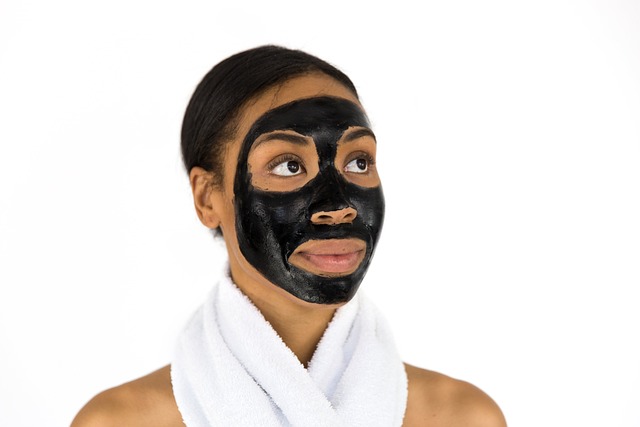Skin tags, caused by genetics, hormonal changes, or friction, can be addressed through various Liverpool Tag Removal methods. Preventative measures include lifestyle adjustments and non-irritating clothing. Home remedies like apple cider vinegar or over-the-counter medications soften and detach tags. Professional options in Liverpool range from cryotherapy for quicker results to surgical excision for larger tags, with each method tailored based on tag size and location. Aftercare, including proper cleaning and avoiding friction, is crucial for successful removal and preventing regrowth.
Struggling with unsightly skin tags on your neck? This guide offers a comprehensive solution. We’ll first ‘dive into’ understanding these small, harmless growths and their common causes, including friction and age. Next, we explore various removal methods, from non-surgical options like freezing or cutting to surgical Liverpool Tag Removal for more persistent cases. We also provide aftercare tips and prevention strategies to ensure the best results and minimize recurrence.
- Understanding Skin Tags on the Neck
- Common Causes of Neck Skin Tags
- Non-Surgical Removal Methods
- Surgical Options for Liverpoool Tag Removal
- Aftercare and Prevention Tips
Understanding Skin Tags on the Neck
Skin tags, also known as acrochordons, are small, soft skin growths that can appear anywhere on the body, including the neck. They are typically harmless but may cause discomfort or self-consciousness for some individuals. In Liverpool, Tag Removal services have become increasingly popular due to their effectiveness in getting rid of these unsightly tags. Understanding what causes skin tags is the first step towards managing them effectively.
Genetics, hormonal changes, obesity, and friction from clothing or jewelry are common factors that contribute to the development of skin tags. They often form in areas where skin rubs against itself, such as the neck, armpits, and groin. While they can appear at any age, they are more prevalent in adults, especially those who are overweight or have a family history of skin tags. Knowing these causes allows individuals to take proactive measures, like maintaining a healthy weight and avoiding irritating clothing, to prevent future skin tag development.
Common Causes of Neck Skin Tags
Skin tags on the neck are a common concern, often caused by friction or irritation from clothing or jewelry. In some cases, they can also be linked to certain medical conditions like acromegaly or skin folding. Hormonal changes and obesity are other potential triggers, especially when excess skin is present in the neck area.
Liverpool tag removal methods vary depending on the size and number of tags. Minor skin tags often fall off on their own with minimal intervention. For larger or persistent tags, home remedies like apple cider vinegar or salicylic acid may provide some relief. However, for effective and permanent removal, consulting a professional is recommended, especially when considering safe procedures like cryotherapy or surgical excision in the Liverpool area.
Non-Surgical Removal Methods
In terms of Liverpool tag removal, there are several non-surgical methods available that can effectively eliminate skin tags on the neck area. One popular approach is using over-the-counter medications, such as those containing salicylic acid or glycolic acid. These topical agents work by softening the skin and detaching the tag from its base. They are easy to apply at home but may take several weeks of consistent use to see results.
Another non-surgical option is cryotherapy, which involves freezing the skin tags with liquid nitrogen. This procedure is often performed in a medical setting and can be more effective for larger or firmer tags. While it may cause some temporary redness and swelling, it offers a relatively quick and pain-free way to remove skin tags without incisions.
Surgical Options for Liverpoool Tag Removal
When considering surgical options for Liverpool Tag Removal, it’s important to understand that this method is typically reserved for persistent or unsightly skin tags that haven’t responded to other treatments. The most common procedures involve excision, where a doctor cuts out the tag, or cryosurgery, which uses liquid nitrogen to freeze and destroy the growth. These methods are usually quick and can be performed as an outpatient procedure, offering permanent solutions for most individuals.
During the consultation, your dermatologist will assess each skin tag’s size, location, and number to determine the best approach. Small tags might be removed with a simple cut, while larger ones or those in delicate areas may require cryosurgery for more precise results. Both methods have their advantages, and your doctor will discuss potential risks, recovery times, and costs associated with each surgical option for Liverpool Tag Removal.
Aftercare and Prevention Tips
After removing skin tags on the neck, proper aftercare is essential for optimal healing and to prevent reoccurrence. Keep the area clean by gently washing it with mild soap and water, patting dry instead of rubbing. You can apply a thin layer of over-the-counter antibiotic ointment or petroleum jelly to promote healing and reduce irritation. Avoid scratching or touching the treated area, and be mindful of clothing that might irritate it, such as rough fabrics or tight neckwear.
To prevent future skin tags from forming in Liverpool Tag Removal areas, maintain good hygiene by regularly washing your hands and keeping your skin clean. Protect your skin from excessive sun exposure, as UV rays can contribute to skin tag development. Maintain a healthy weight, as obesity is linked to an increased risk of skin tags. Lastly, be mindful of clothing friction; opt for loose-fitting garments to reduce the chances of irritation and potential new skin tag formation.
Skin tags on the neck can be unsightly and uncomfortable, but with a range of safe removal methods available, achieving a smooth, tag-free neck is achievable. For those seeking effective Liverpool Tag Removal, understanding the causes and exploring both non-surgical and surgical options is key. While home remedies offer temporary relief, professional treatment provides lasting results. Following proper aftercare and taking preventive measures can help deter new tags from forming. With the right approach, you can bid farewell to skin tags and enjoy a confident, smooth neck once again.
